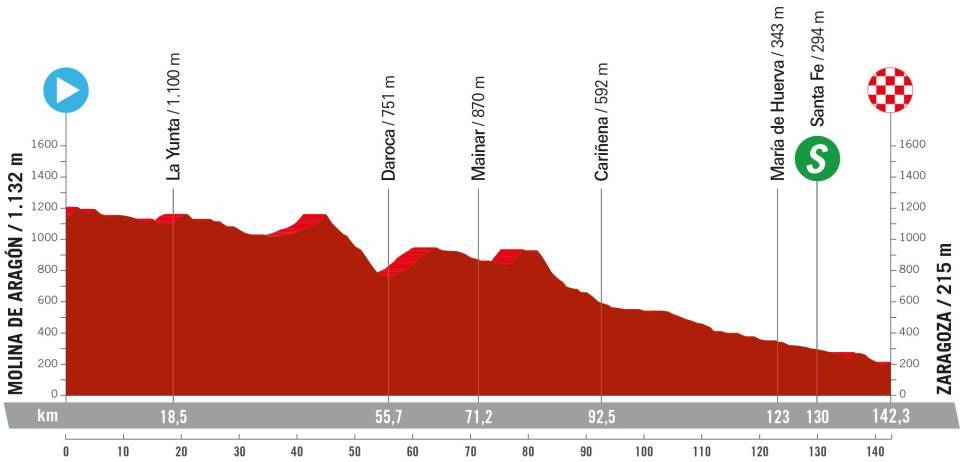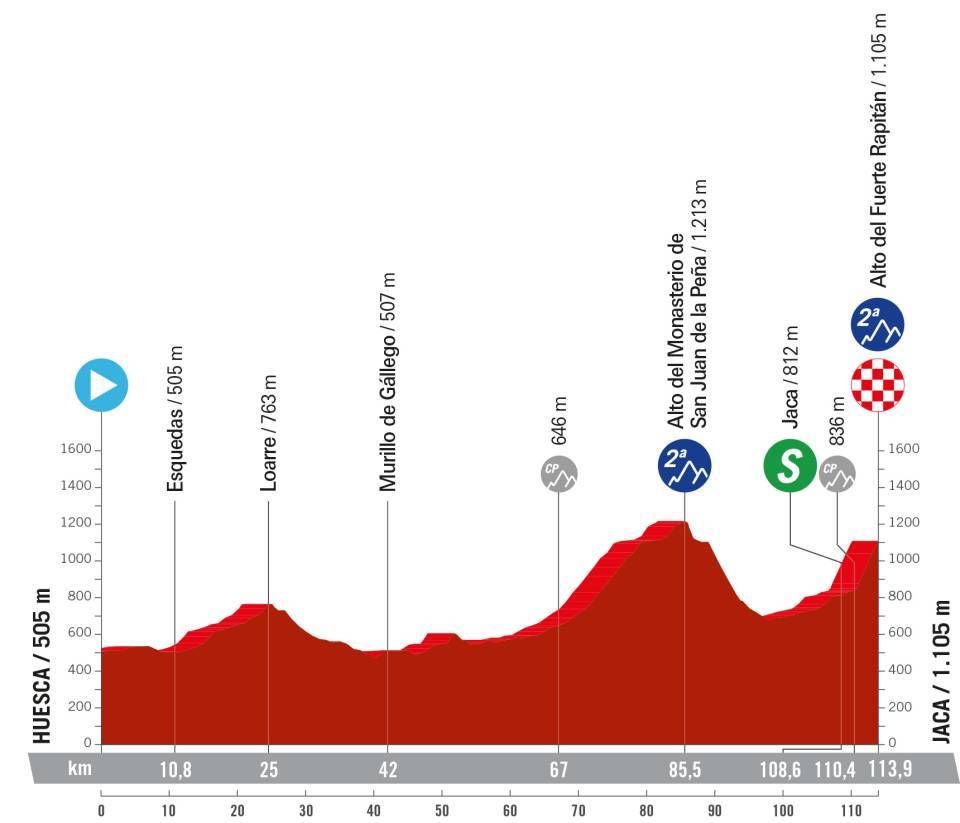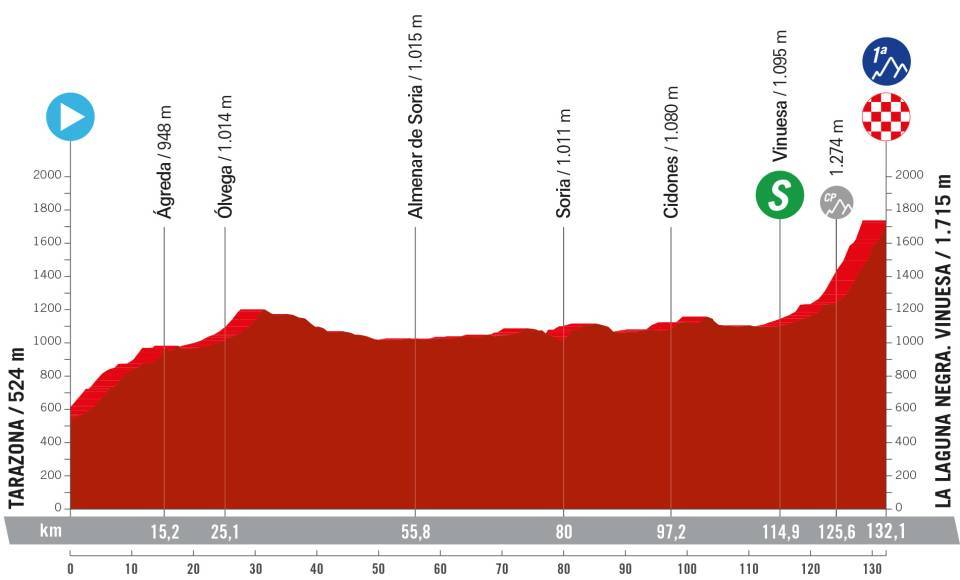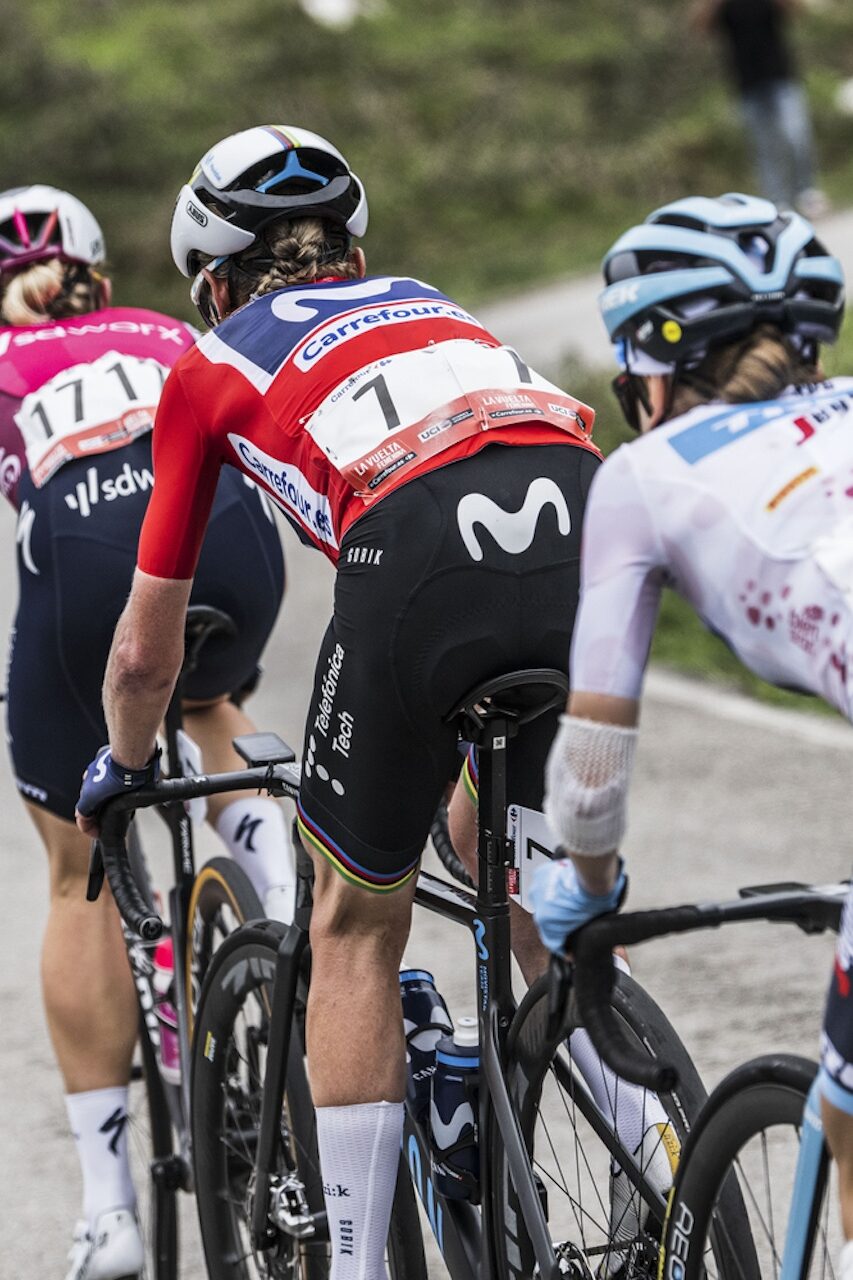The first “Grand Tour” of the year, for the women, kicks off only one week after the end of the Spring Classics and Liège-Bastogne-Liège.
From April 28th to May 5th at La Vuelta Femenina, the women will test themselves over eight stages, starting with a team time trial in Valencia and ending atop the Valdesquí ski resort. As most Tours do, the race has something for everyone. Sprint-friendly stages for the fast, mountainous days for those targeting the general classification, and some in-between days thrown in for everyone in the middle.

Below you will find a day-by-day breakdown of the stages, what to expect from each, and who might have bookmarked that day for a chance at glory. Keep an eye on this website for a full breakdown of contenders for each classification.
Play our Vuelta fantasy game
Vuelta Fantasy is here! Fantasy competitions can be complicated, but playing this one couldn’t be easier. All you need to do is select one rider per stage to lead your team. The twist? You can only choose a rider once! To make the competition even more fun you have the ability to challenge your friends with a mini-league.
Still not sure? Check out this handy ‘How to play cycling fantasy games‘ by Dane Cash.
To play simply head here. Alternatively, download the app from either the App Store (iOS) or Play Store (Android), and you’re all set.
The stages
La Vuelta leaves the GC battle for the final few days, starting instead with some easier stages to ease the legs into stage racing. This year’s race is the second full week-long stage race for the women under the title of “La Vuelta”. It started as a criterium-style race in Madrid on the final day of the men’s Vuelta and grew slowly over the years. Last year the race was relocated to May on the calendar and given a new life as a week-long “Grand Tour” for the women.
Stage 1 TTT: Sunday, April 28 – Valencia (16 km)
Traditionally, these week-long races love to open with a team time trial. The Giro does it often, so it is unsurprising La Vuelta will start the week with the discipline, which is rarely seen elsewhere on the calendar. At 16 km the length is average, and as TTTs go it’s very flat.

There are a few corners out of the start and entering the finish, plus a 90-degree turnaround in the middle, but other than that it’s an out-and-back TTT. Going into the finish is a tight right-hander and at that point, it will be about saving milliseconds, but a few riders from each team will likely be dropped. The corners opening the stage are a bit trickier, with a left, right, right, right, left, and slight left into the bulk of the stage.

Last year, Visma-Lease a Bike won the opening stage. Their team at the time was packed with time trial talent, including Dutch national ITT champion Riejanne Markus. Canyon-SRAM surprised by finishing second, powered by Chloe Dygert.
This year, with Ellen van Dijk back on the roads for Lidl-Trek, the American team is the team to beat, but FDJ-Suez has a strong time trial-focused team lining up, as does Canyon-SRAM with Antonia Niedermaier and Ricarda Bauernfeind.
Stage 2: Monday, April 29 – Bunol to Moncofa (118 km)
The second stage includes only one climb, a third category ascent 74 km into a 118 km stage before finishing with a fast descent into the finish in Moncofa. It does offer a launch point for someone to try to get away – at 5.9 km long with an average of 4.3% the climb isn’t insignificant. But it’s unlikely to be a general classification stage. More likely, a reduced group will go to the line.

This looks like a great stage for Marianne Vos, who won two stages of last year’s race. One of the stages she won, the fourth stage from Cuenca to Guadalajara, was similar in profile. On that occasion, the Dutchwoman outsprinted Movistar’s Emma Norsgaard and SD Worx-Protime’s Marlen Ruesser to win from a group of 29.
Stage 3: Tuesday, April 30 – Lucena to Teruel (131 km)
The third stage also features one categorized climb, also a Cat 3, but this one is farther from the finish. After climbing the 6.1 km ascent that averages 6.2%, the peloton continues along a plateau instead of descending to the finish, like on stage 2.
There are more uncategorized climbs before the finish in Teruel, so even though the day only has one climb, there is 1,000 m of altitude gained throughout the 131 km.

The stage starts with a climb which lends itself to a breakaway, and with the climbing to come teams might be keen to get a rider up the road to help their general classification rider later in the day. This is a stage that has the potential to be aggressive from start to finish, especially if someone wants to try to get some time before the big mountains at the end of the week.
Stage 4: Wednesday, May 1 – Molina de Aragon to Zaragona (142 km)
The fourth stage is the only stage of the race billed as a “flat” stage. Although it actually takes it flat one step farther and descends in altitude.

For this stage, it’s a day for Charlotte Kool or Marianne Vos, all the way. With so few opportunities for the sprinters, and mountains on tap for Thursday, the teams with a sprinter will work hard to make sure their rider has a clear path to the finish line.
Stage 5: Thursday, May 2 – Huesca to Jaca (113 km)
On day five we finally get some real mountains, with two Category 2 climbs on tap late in the stage, it’s a true general classification stage. By this point the GC will probably still be close between the top favourites who want to take the red jersey at the end of the week, so this will be the first genuine attempt to shake out those who are serious contenders.
The opening 67 km is relatively flat, with a few small uncategorized climbs, it’s all about setting the peloton up for the climb to the monastery at San Juan de la Peña. The 18.5 km climb averages only 3% and will shell a lot of the sprinty-riders. It may also isolate a few GC contenders before the second climb of the day.
The second climb – Alto del Fuerte de Rapitán – is shorter than the first at only 3.4 km, but the average gradient is 7.9% with pitches of 10%. At most, a small group will make it to the top together.

The fifth stage is a great one for Demi Vollering. It is reminiscent of the fifth stage in last year’s edition where Vollering bested Annemiek van Vleuten and Ricarda Bauernfeind atop a Category 2 climb to Mirador de Peñas Llanas.
Stage 6: Friday, May 3 – Tarazona to La Laguna Negra (132 km)
More climbing awaits the peloton for the sixth stage, albeit a lot less than the stage before. The sixth stage features only one categorized climb and significantly less uncategorized climbing. However, the final Category 1 climb to the finish will decimate the peloton, with portions of 13 and 14% over the 6.5 km ascent.

It will be a GC battle on stage six that will favour the likes of Gaia Realini, Kasia Niewiadoma and Vollering, but will also see some others test their form against the best. Liane Lippert, for example, will take control of Movistar after the retirement of Van Vleuten (last year’s overall winner).
Stage 7: Saturday, May 4 – San Esteban de Gormaz to Siguenza (126 km)
Not billed as a flat stage, the seventh stage hosts no categorized climbs with only minimal uncategorized climbing so it will be a final opportunity for the sprinters. The riders who were in play during stage 4 will be back at it but now with some climbing in the legs so it will be for the experienced sprinters.

Stage 8: Sunday, May 5 – Madrid to Valdesqui (89 km)
The final stage is short at only 89 km but includes two Category 1 climbs, so if the general classification isn’t decided on Friday, it will be on Sunday. In total, the peloton has to climb a total of 2,187m to finish off La Vuelta.
There is only 36 km of racing before the road pitches upward for the first climb – Puerto de la Morcuera. The 9.1 km climb averages 6.8%, but there is very little recovery time before the road rises again towards the Valdesquí ski resort. The second ascent is 16.2 km long and averages 4.4%, but as it’s straight after the first climb it will be a doozy. The final seven kilometres of the stage average 6%, before it tops off with a flat push to the line.

With the sprint stages behind them, and only the general classification left on the mind, this final stage will deliver a dramatic finale to this year’s La Vuelta. Last year, Van Vleuten was bested on the final climb by both Realini and Vollering but the Dutchwoman held onto red, barely. This year, Vollering is out for revenge, but the peloton has risen to match the Tour de France Femmes champion in strength.
The race promises to be a good one, the first true stage-racing test of the season. A full contenders preview will be available soon, as well as more detailed daily coverage of each stage.
What did you think of this story?



